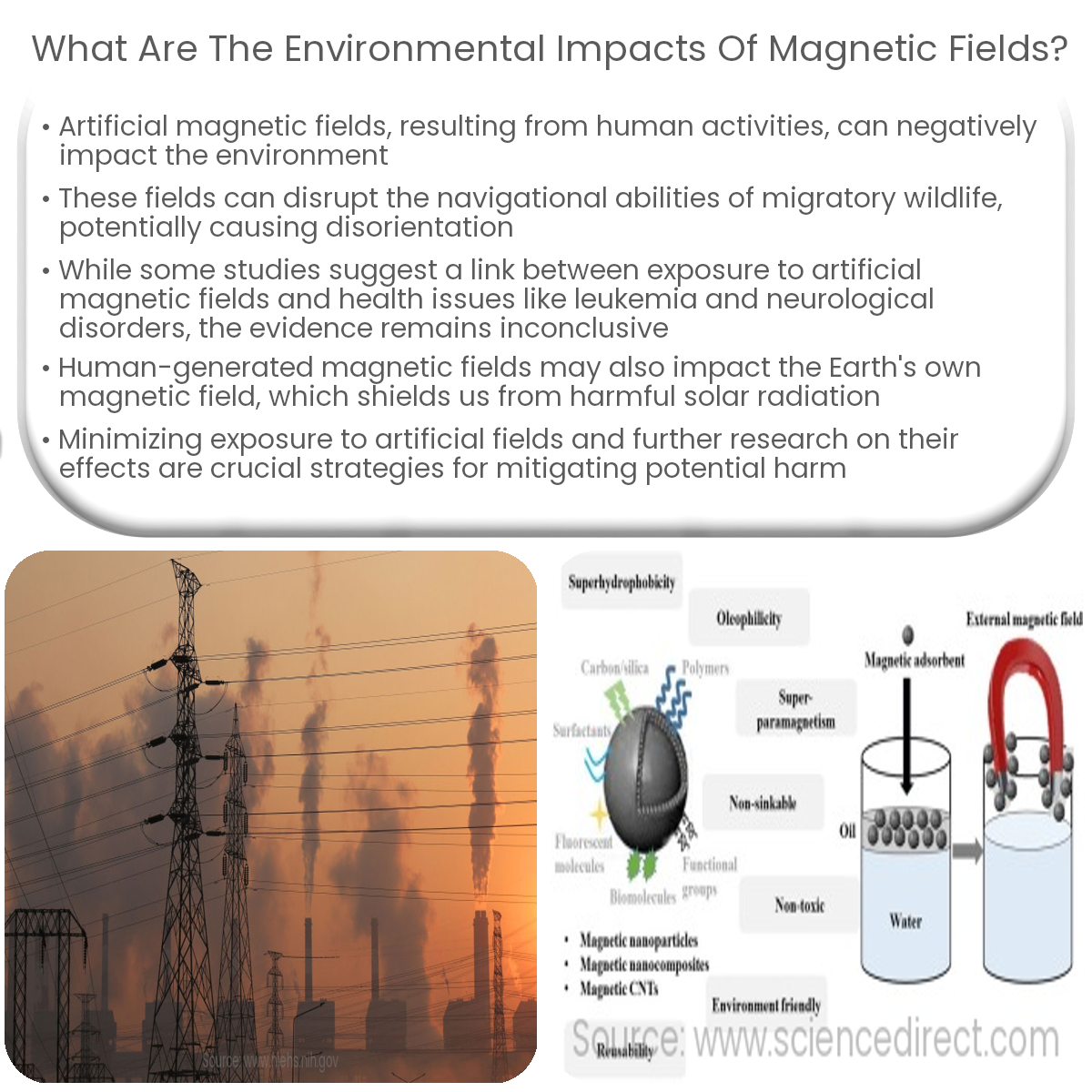Magnetic fields can affect wildlife navigation, potentially impact human health, and cause local disturbances in the Earth’s magnetic field.
Environmental Impacts of Magnetic Fields
Magnetic fields are an inherent part of our planet and its natural processes, but human activities have also created artificial magnetic fields that can have environmental impacts. This article discusses the effects of magnetic fields on various aspects of the environment, including wildlife, human health, and the Earth’s magnetic field.
Effects on Wildlife
Many animals, such as birds and sea turtles, rely on the Earth’s natural magnetic field for navigation during migration. Exposure to artificial magnetic fields, generated by power lines or other sources, may interfere with these animals’ ability to navigate, potentially causing disorientation and stranding. In addition, some studies have shown that exposure to artificial magnetic fields may affect the behavior, reproduction, and growth of various species.
Effects on Human Health
There is ongoing debate about the potential health effects of exposure to artificial magnetic fields generated by power lines, electrical appliances, and other sources. Some studies have suggested a link between exposure to low-frequency magnetic fields and an increased risk of certain health issues, such as leukemia and neurological disorders. However, other studies have found no conclusive evidence to support these claims. The World Health Organization (WHO) currently classifies low-frequency magnetic fields as a “possible human carcinogen,” and more research is needed to better understand their potential health effects.
Effects on the Earth’s Magnetic Field
Human activities that generate artificial magnetic fields may also have an impact on the Earth’s magnetic field, which plays a crucial role in shielding the planet from harmful solar radiation. While the overall impact of artificial magnetic fields on the Earth’s magnetic field is not well understood, some studies have suggested that activities such as mining and the construction of large-scale infrastructure projects can temporarily disturb local magnetic fields. However, these disturbances are usually minor and short-lived.
Minimizing Environmental Impacts
While the environmental impacts of magnetic fields are still not fully understood, it is essential to take precautions to minimize potential harm. Some strategies include reducing exposure to artificial magnetic fields by keeping a safe distance from power lines and electrical appliances, designing infrastructure projects to minimize their impact on local magnetic fields, and conducting further research to better understand the potential effects of magnetic fields on the environment and human health.


